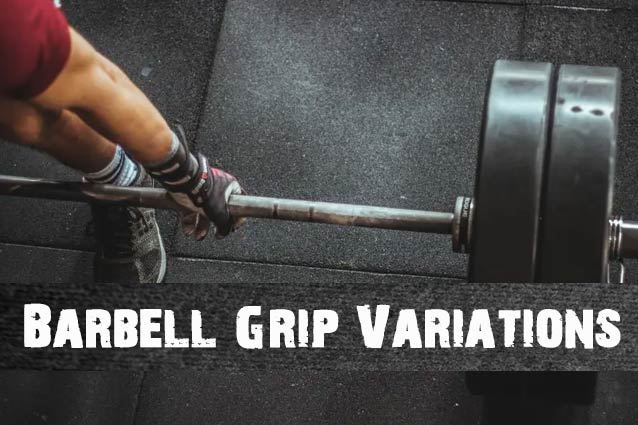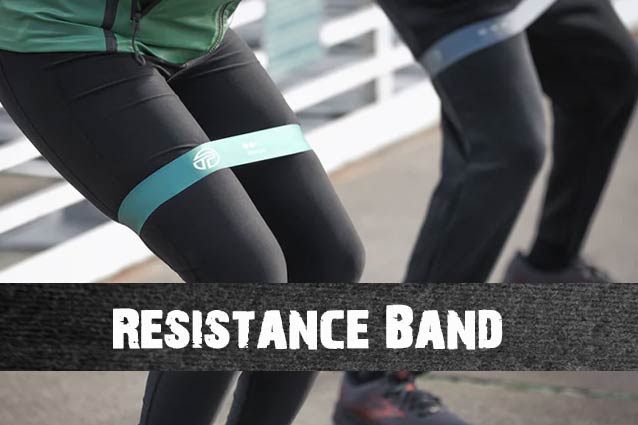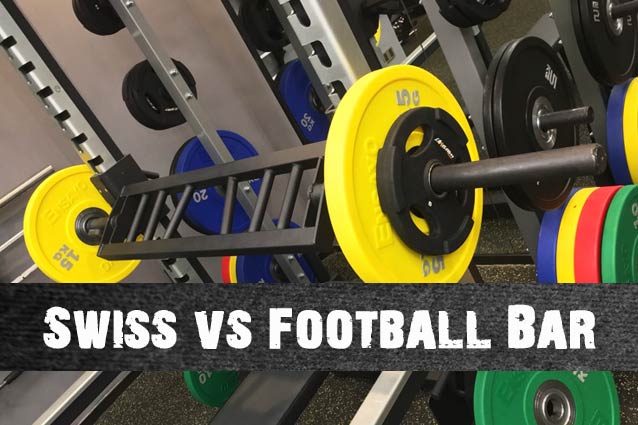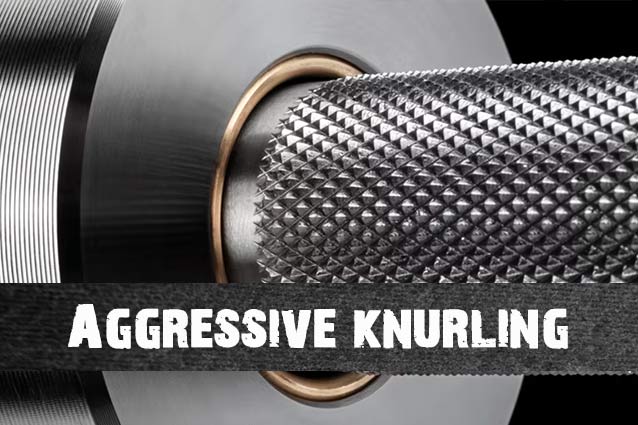If you’re new to weightlifting or just looking to perfect your form, one of the most fundamental skills you need to master is gripping the barbell.
It may seem like a simple task, but the way you grip the barbell can have a significant impact on your performance and safety.
There are a few different ways to grip a barbell, and each technique has its own benefits and drawbacks. Some grip styles are better suited for certain exercises, while others are more comfortable or provide better grip strength.
But regardless of which grip you choose, proper form is crucial to prevent injuries and ensure maximum gains.
In this article, we’ll explore the different types of barbell grips, the pros and cons of each, and how to properly execute them.
Whether you’re a seasoned lifter or just starting out, improving your barbell grip can take your training to the next level. So let’s dive in and learn how to grip the barbell like a pro!
Overhand grip
The overhand grip is the most common grip, where all four fingers and the thumb are wrapped around the barbell. Most beginner lifters only use this method.
The overhand grip can be used in most exercises on most weight machines. While it may not be the most efficient grip for a given exercise, it is likely the most versatile grip.
Many people like to use a suicide grip (which we’ll discuss later) instead of an overhand grip when doing barbell bench presses.
However, it is important to know that the number one cause of fatal gym accidents in the United States is failing to grip the bar during bench presses, causing the equipment to slip and hit the chest.
Although many fitness and bodybuilding experts use a suicide grip, they generally do not use it with their maximum weight, and they may use various auxiliary methods, such as grip handles and gym chalk.
Safety is more important than health.
Besides, although a suicide grip may be more effective for working the chest, it doesn’t necessarily have to be used with a barbell.
Related: Bad shoulders? Which one would you prefer – Swiss Bar or Football Bar?
Suicide grip(False grip)
The term “suicide grip” refers to a way of holding a weightlifting barbell where the thumb is positioned on the same side of the bar as the fingers, rather than wrapping around the bar.
This grip is sometimes considered dangerous because it can cause the lifter to lose control of the bar, leading to serious injury or even death.
While “suicide grip” and “false grip” are often used interchangeably, they can refer to slightly different grips in weightlifting.
The false grip can be divided into two categories – pushing and pulling movements. We know that if the forces are not in a vertical line, there will be a torque, which, according to the principle of the lever, will increase the unnecessary burden on the forearm or wrist.
Therefore, the false grip is often a more efficient grip than the overhand grip in many exercises because the resistance of the false grip is always transmitted in a vertical line.
Many people feel that their chest is not activated during bench press, and their anterior deltoids and biceps are tired. Or when they exercise their back, they only feel soreness in their forearms and arms, but not in their back. These problems can be solved by using a false grip.
For example, as mentioned earlier, although the false grip is better for activating the chest muscles (and even reduces the risk of shoulder joint impingement) during bench press, it is not recommended for barbell bench press because it can be dangerous. However, it can be used confidently for machine bench press and other fixed machines such as the Total Gym and seated chest press, which do not hit the chest at the lowest point (unless you are a G-cup or larger…).
In addition, using a false grip with a push-up stand is also an effective training method for enhancing the training effect of the chest. Even if you slip, at most you will fall on your chest (and if there is a yoga mat underneath will be better).
Furthermore, I recommend using a false grip for all back exercises, such as pull-ups, lat pulldowns, seated rows, and dumbbell rows. If you use an overhand grip, the resistance point will be at the middle of your hand, creating a torque in your wrist and forearm, which forces your forearm to exert more effort and causes your back to not feel the work. With a false grip, the resistance point moves up to below your fingers, so the exertion and resistance are both vertical, and the activation of the back muscles is more obvious.
Hook grip
The hook grip is a method of holding the barbell where the lifter wraps their fingers around the bar and then places their thumb on top of the fingers.
The principle of hook grip is that it allows the lifter to create a more secure grip on the barbell, as the thumb helps to “lock” the fingers in place and prevent the bar from slipping.
One advantage of using a hook grip is that it can allow the lifter to lift heavier weights, as the grip is more secure and can withstand greater loads.
Additionally, a hook grip can help to reduce the strain on the wrist, as the lifter is not relying solely on the strength of their grip to hold the barbell.
However, one potential disadvantage of hook grip is that it can be uncomfortable or even painful for some lifters, particularly when they are first starting to use it. The pressure on the thumb can cause discomfort, and it may take time to adjust to the feeling of the grip.
Additionally, the process of “hooking” the thumb can be difficult for some lifters, particularly those with larger hands or less flexibility.
Reverse grip
The reverse grip is a method of grasping the barbell with palms facing up, often used for exercises targeting the upper chest and back muscles.
Due to the structure of these muscles, which are linked in the opposite direction to the humeral (greater) tubercle, the reverse grip can be more effective for many exercises.
One of the main uses for the reverse grip is for back training, and it can be said that the reverse grip is more efficient for training the latissimus dorsi muscles. This is due not only to the muscle structure, but also to the increased joint stability provided by the internal rotation of the shoulder, as well as the reduced involvement of the chest muscles.
This usage of the reverse grip is particularly effective for human climbing, as it allows for the engagement of the leg, chest, and back muscles, providing a significant advantage (which is why the human chest muscles are relatively well-developed, though not as much as the wings of birds that fly).
Additionally, because the upper chest muscle fibers are linked in the opposite direction to the humeral tubercle at the lower end, the reverse grip can effectively target the upper chest muscles when performing cable crossovers or even reverse grip bench press.
Common Barbell Grip Mistakes
There are a number of common mistakes that lifters make when gripping a barbell. Here are a few of the most common ones:
- Gripping the bar too tightly: While a firm grip is important for maintaining control of the barbell, gripping too tightly can actually reduce your grip strength and lead to fatigue more quickly.
- Gripping the bar too loosely: On the other hand, if your grip is too loose, you risk losing control of the bar or dropping it, which can be dangerous.
- Placing the bar too high or too low in the hand: The barbell should be positioned across the palm of your hand, just above the base of your fingers. Placing it too high in the hand can cause the weight to shift and make it harder to control, while placing it too low can put unnecessary strain on your wrists.
- Not using a full grip: Some lifters try to use a partial grip, using only their fingers to hold the barbell. This can be dangerous and increase the risk of dropping the weight or injuring your hands.
- Not keeping the wrist straight: Your wrists should be held in a neutral position when gripping the barbell. Bending them too far forward or backward can put undue stress on the joint and increase the risk of injury.
By avoiding these common mistakes and focusing on proper form, you can ensure a safe and effective barbell grip that will help you achieve your fitness goals.
Summary
Different grips have different effects on muscle activation and training. Finding the most suitable grip can help you achieve better results with less effort.
The overhand grip is suitable for most equipment, especially barbell bench press, and places more emphasis on safety.
The false grip is suitable for most back training and can increase the activation of the latissimus dorsi muscles. It is also suitable for safe chest training, such as machine bench press, cable crossovers, or push-ups.
The hook grip is mainly suitable for heavy deadlifts or high pulls, and can better balance the muscle groups than the overhand or underhand grip.
The reverse grip can effectively activate the latissimus dorsi muscles and upper chest due to differences in muscle structure and force application.







